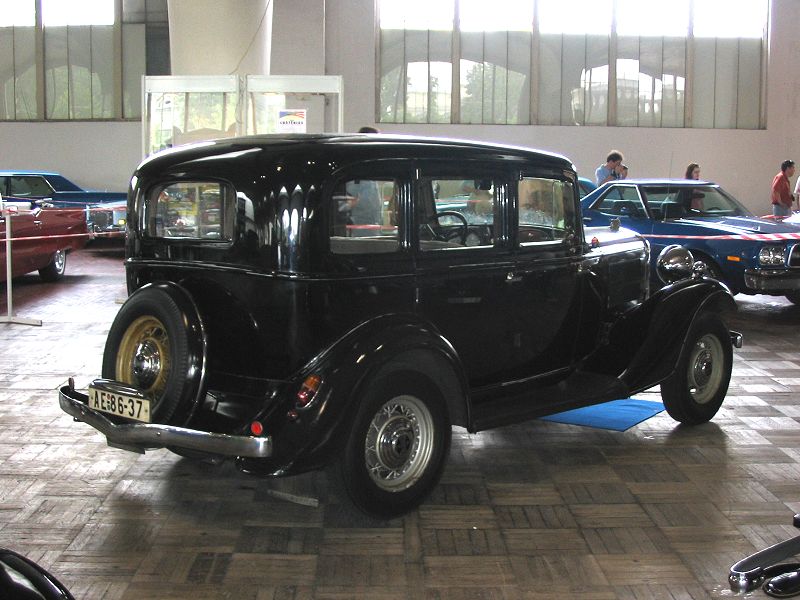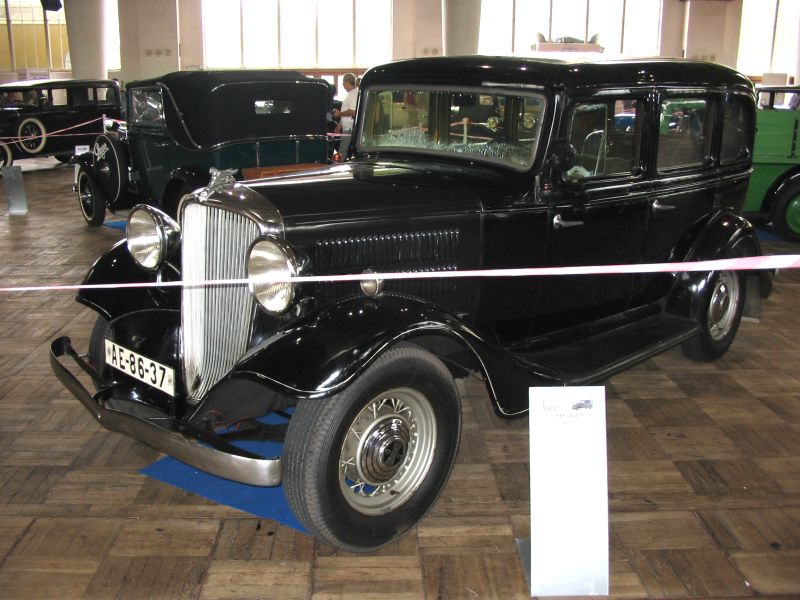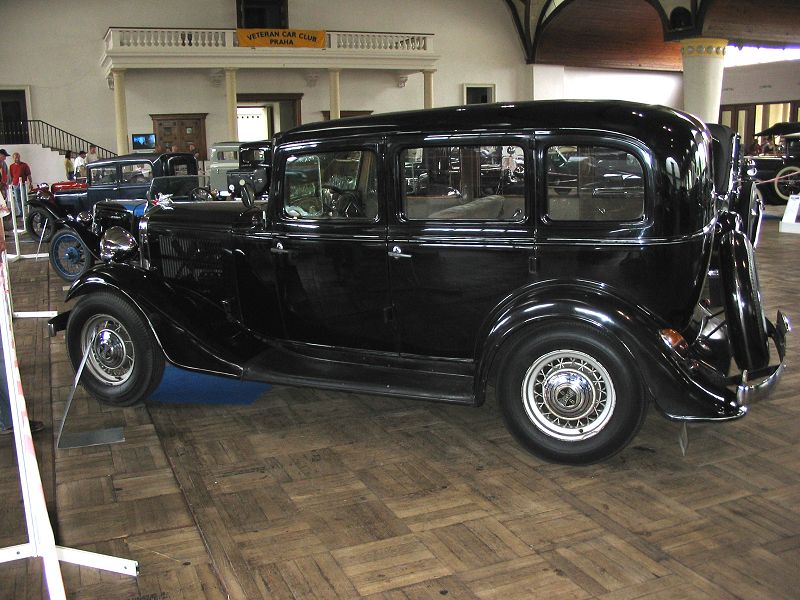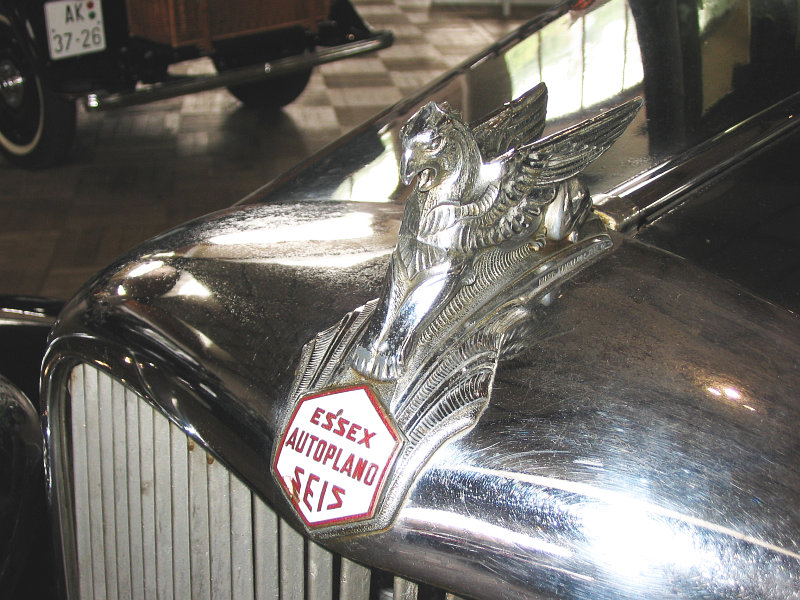Description
The Hudson Essex Terraplane was one of the most remarkable and influential cars of the early 1930s—a machine that combined advanced engineering, stylish design, and impressive performance at an affordable price. Introduced by the Hudson Motor Car Company in 1932, the Terraplane began as a model within the Essex line but quickly grew into a distinct brand of its own. It embodied the spirit of the era, offering Depression-era motorists a car that was fast, durable, and surprisingly refined for the money.
The Terraplane’s origins lay in Hudson’s desire to broaden its appeal beyond the expensive luxury market dominated by models such as the Hudson Great 8. The economic turmoil of the early 1930s demanded smaller, more economical cars, yet Hudson wanted to retain its reputation for engineering excellence. The result was the Essex Terraplane—a compact, lightweight car powered by strong engines and built with the same attention to detail as the company’s larger models.
The first Essex Terraplane, launched in July 1932, was offered with either a six- or eight-cylinder engine. The six-cylinder unit was a 3.5-litre side-valve design producing around 70 horsepower, while the optional straight-eight delivered close to 90 horsepower, remarkable for such an affordable car. Both engines were known for their smoothness and reliability, and they were mounted in a sturdy steel ladder-frame chassis with hydraulic shock absorbers and mechanical brakes. The combination of light weight and strong power gave the Terraplane excellent performance—far superior to many competitors in its class.
Hudson promoted the Terraplane’s speed and toughness with a bold marketing campaign. The name itself evoked modernity and adventure—“Terraplane” suggesting the idea of a car that glided over the earth like an airplane over the sky. Hudson capitalized on this image with promotional stunts, including hill climbs, record runs, and endurance tests. One famous demonstration featured aviator Amelia Earhart, who christened the first production model in 1932, linking the car’s identity to aviation and progress.
In terms of styling, the Terraplane reflected the sleek, streamlined aesthetic that was beginning to dominate automotive design in the early 1930s. The long, low bonnet, swept fenders, and gracefully arched rooflines gave it a modern, aerodynamic look. Chrome accents and well-proportioned bodywork gave the car a level of sophistication unusual in its price range. Hudson offered the Terraplane in several body styles, including two- and four-door sedans, coupes, convertibles, and roadsters.
Inside, the car was comfortable and well-appointed, featuring quality upholstery, clear instrumentation, and attention to detail that belied its modest cost. Though smaller and less opulent than the full-size Hudsons, the Terraplane retained the company’s emphasis on craftsmanship. Buyers appreciated the combination of solid build quality and modern styling at a time when many rival brands were struggling to offer value and reliability.
Performance was a key selling point. Contemporary road tests praised the Terraplane for its brisk acceleration, smooth running, and confident handling. Its high power-to-weight ratio allowed it to compete with far more expensive cars in both speed and endurance events. In the mid-1930s, Terraplanes achieved success in competitive rallies and hill climbs, earning a reputation for toughness and dependability. Police departments in the United States also adopted Terraplanes for pursuit duty, attracted by their speed and reliability.
In 1934, the Essex name was dropped entirely, and the car became simply the Hudson Terraplane. The new models received a more refined chassis, improved suspension, and updated styling that aligned with the emerging art deco trends. The Terraplane line continued until 1938, when Hudson consolidated its range under a single brand name. By that time, over 300,000 Terraplanes had been produced—a significant achievement for a marque that lasted barely six years.
The Terraplane’s success helped sustain Hudson through the difficult Depression years. It allowed the company to maintain production volume and profitability while continuing to innovate. Many of the engineering lessons learned from the Terraplane—such as lightweight construction, efficient powertrains, and aerodynamic design—would later influence Hudson’s famous “Step-Down” models of the late 1940s.
Today, the Hudson Essex Terraplane holds a special place in automotive history. It represents the perfect balance between performance, affordability, and style during one of the most challenging economic periods in the 20th century. Collectors prize surviving examples for their elegant lines, mechanical simplicity, and the sense of optimism they embodied.
The Terraplane was more than just a car—it was a symbol of ingenuity and resilience. It showed that even in hard times, a company with imagination and engineering skill could produce a car that was both practical and inspiring. Whether admired for its design, its speed, or its connection to America’s industrial creativity, the Hudson Essex Terraplane remains one of the most fascinating and enduring names in early 20th-century motoring.




